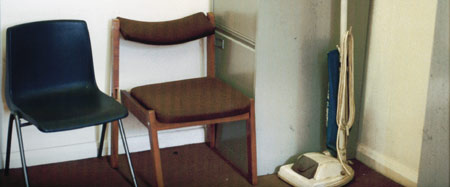
This blog often looks at methods for preventing people sitting down comfortably, usually in public space, from actual benches designed for this purpose, to features of walls and ledges which treat people like pigeons.
How often is the complete lack of seats a deliberate strategy? Seth Godin, in a post looking at different strategies for running meetings, suggests something interesting:
I think most of the time, most meetings should be held without chairs. People standing up think more quickly and get distracted less often. And the meetings don’t last as long.
That probably does ‘work’ as part of a strategy to speed up meetings, but – crucially – only if there is a mechanism for the participants to end the meeting. Whoever is leading the meeting (if anyone is) also needs to be standing up and experiencing just the same as everyone else. Otherwise there’s the tendency for the stand-up meetings to be characterised by a lot of people not thinking more quickly, but merely irritated, shifting their weight from leg to leg, and wishing they weren’t there. I think we’ve all been to meetings like that, both seated and standing.
Is the ‘chair-less meeting’ a commonly used deliberate tactic? Can it be used to get people to agree to things because of their discomfort and desire to get away quickly?
Image: ‘Chair for unwanted visitors’ – photo by David Weightman from a set shot for Good Thinking: Brunel Design, 2004.

2 Comments